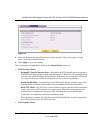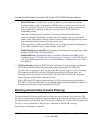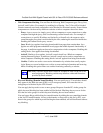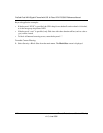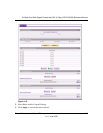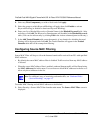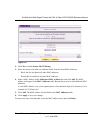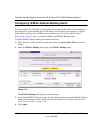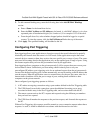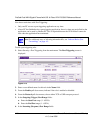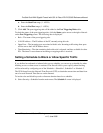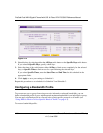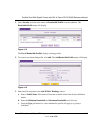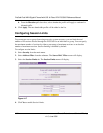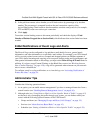
ProSafe Dual WAN Gigabit Firewall with SSL & IPsec VPN FVS336G Reference Manual
Firewall Protection and Content Filtering 4-27
v1.2, June 2008
5. To add a manual binding entry, enter the following data in the Add IP/MAC Bindings
section:
a. Enter a Name for the bound host device.
b. Enter the MAC Address and IP Address to be bound. A valid MAC address is six colon-
separated pairs of hexadecimal digits (0 to 9 and a to f). For example: 01:23:45:ab:cd:ef.
c. From the pull-down list, select whether dropped packets should be logged to a special
counter. To view the counter, click the Set Poll Interval link at the top of the menu.
6. Click Apply. The specified binding will be added to the list.
Configuring Port Triggering
Port triggering allows some applications to function correctly that would otherwise be partially
blocked by the firewall when the router is in NAT mode. Some applications require that when
external devices connect to them, they receive data on a specific port or range of ports. The router
must send all incoming data for that application only on the required port or range of ports. Using
this feature requires that you know the port numbers used by the application.
Port triggering allows computers on the private network (LAN) to request that one or more ports
be forwarded to them. Unlike basic port forwarding which forwards ports to only one
preconfigured IP address, port triggering waits for an outbound request from the private network
on one of the defined outgoing ports. It then automatically sets up forwarding to the IP address that
sent the request. When the application ceases to transmit data over the port, the router waits for a
timeout interval and then closes the port or range of ports, making them available to other
computers on the private network.
Once configured, port triggering operates as follows:
1. A PC makes an outgoing connection using a port number defined in the Port Triggering table.
2. The VPN firewall records this connection, opens the additional incoming port or ports
associated with this entry in the Port Triggering table, and associates them with the PC.
3. The remote system receives the PC’s request and responds using the different port numbers
that you have now opened.
4. The VPN firewall matches the response to the previous request, and forwards the response to
the PC.
Without Port Triggering, this response would be treated as a new connection request rather than a
response. As such, it would be handled in accordance with the inbound service rules.



